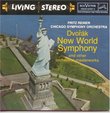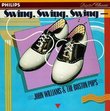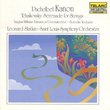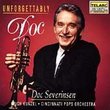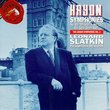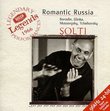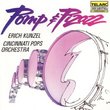| All Artists: Richard [1] Strauss, Andre Previn, Vienna Philharmonic Orchestra Title: Richard Strauss: Eine Alpensinfonie Members Wishing: 0 Total Copies: 0 Label: Telarc Release Date: 5/28/2002 Genre: Classical Styles: Historical Periods, Modern, 20th, & 21st Century, Symphonies Number of Discs: 1 SwapaCD Credits: 1 UPC: 089408021121 |
Search - Richard [1] Strauss, Andre Previn, Vienna Philharmonic Orchestra :: Richard Strauss: Eine Alpensinfonie
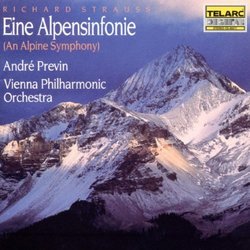 | Richard [1] Strauss, Andre Previn, Vienna Philharmonic Orchestra Richard Strauss: Eine Alpensinfonie Genre: Classical
|
Larger Image |
CD DetailsSimilarly Requested CDs
|
CD ReviewsGlorious Recording of Gorgeous Music Dr. Christopher Coleman | HONG KONG | 06/19/2002 (5 out of 5 stars) "Eine Alpensinfonie dates from a time and place now past when a respected composer could literally write for any orchestral forces he desired. It is scored for a huge orchestra (150 instruments, by one count--although not 150 different instrumental parts) and includes hecklephone, windmachine, thundermachine, tenor tubas, and 20(!) French horns--12 are offstage and play only in 21 measures of the piece, for less than one minute. It is a veritable bible of orchestration--Strauss is a master of handling huge forces, surpassed only by Gustav Mahler, and that arguably. But Strauss's layers of counterpoint and his textural conceptions can suffer at the hands of overenthusiastic performers or an insufficiently aware conductor. Andre Previn and the Vienna Philharmonic prove themselves more than capable, though, and this is an absolutely beautiful performance that always brings tears to my eyes. Following the score while listening to this recording demonstrates an astonishing clarity of performance in such a complex score, and if the low brass tone crests a bit on occasion it is surely Strauss's intention--otherwise he would not have written two trombones and two tubas on a pedal G (!) fortissimo. That passage cannot and should not be played delicately--trust me, I'm a trombonist. Worthier of note are the fantastic performances by the first trumpet, who Strauss treats as almost superhuman; the gorgeous horn/tenor tuba section, and the fantastically lush sound overall. The performance is not without flaws, but the problems are minor indeed and issues of interpretation--for example, at the very ending Previn does not observe Strauss's fermata, and the violins never really glissando noticeably where Strauss indicates to do so. The final interval of a twelfth (a compound fifth, from F at the top of the treble clef staff to Bb below the staff) is marked glissando; what is meant here is a slide from one note to the next, without break, and consequentially the F and the notes before it will likely be played on the G string, resulting in a dark sound very appropriate for the ending of the piece (the ending section is even titled "Night"). But the Vienna Philharmonic, or Previn, or both, see it otherwise. The glissando is inaudible to me, there is no connection between the penultimate and the final note, and the final phrase is not, I believe, played on the G string at all. Still, this is quite a subtle distinction and not one that significantly mars the overall performance of truly deep and powerful music. Strauss has been criticized for being overly programmatic and literal, writing trivial music and being derivative of Richard Wagner and Gustav Mahler. Whatever truth these criticisms hold, the fact remains that Wagner, Mahler and Strauss revolutionized music. Aside from their already well-known harmonic innovations and orchestral mastery, they freed melody from its primarily vocal conception, which had limited it from its origin. Where most composers before them would follow a large leap with motion in the opposite direction, thereby restricting the melodic line in musical space, these three composed great soaring lines in which a large leap might well be followed by another leap or stepwise motion in the same direction. The resulting themes often surpass the range of a single instrument; a given melody might, for example, begin in the tuba doubled with bassoon, celli and contrabasses, move to French horns and finally end in the upper registers of flutes, oboes, and violins. Orchestration becomes not simply an assigning of instruments to particular lines, but an inseparable part of the composition of a piece. Whatever flaws Strauss's music might have (and I have to admit that the Storm Scene in the Alpine Symphony, with its wind and thunder machines and the portrayal of raindrops in the pizzicato strings is too cliched for my taste), its glories far surpass them.It is a bit of a shame that nothing is coupled with the Alpine Symphony--at only 48 minutes this disc is a bit slim; and I think that Death and Transfiguration would have made a stunning companion piece. But perhaps Previn and Vienna have already released a version of that work, at any rate, even alone this is an excellent performance of a glorious piece and well worth owning." Monumental! D. Seymour | Atlanta, GA USA | 02/15/2002 (5 out of 5 stars) "I'll agree with the reviewer below that this may not be the most passionate version of the Alpine Symphony available. However, this disc is my favorite of the four Strauss discs recorded by Andre Previn on Telarc. The Symphony speaks for itself. It is a cliffhanger packed full of beautiful, energetic themes. Telarc captures the Vienna Philharmonic orchestra sound as vast as all outdoors. The glassine woodwinds and sumptuous strings descend down the mountain like the cascades of an avalanche. The near presence and dynamic range of the orchestra help promote the travelogue nature of the piece. I feel that Previn's carefully calculated reading allows the listener to absorb Strauss' stunning orchestral effects with the appropriate cold chills."
|

 Track Listings (22) - Disc #1
Track Listings (22) - Disc #1
